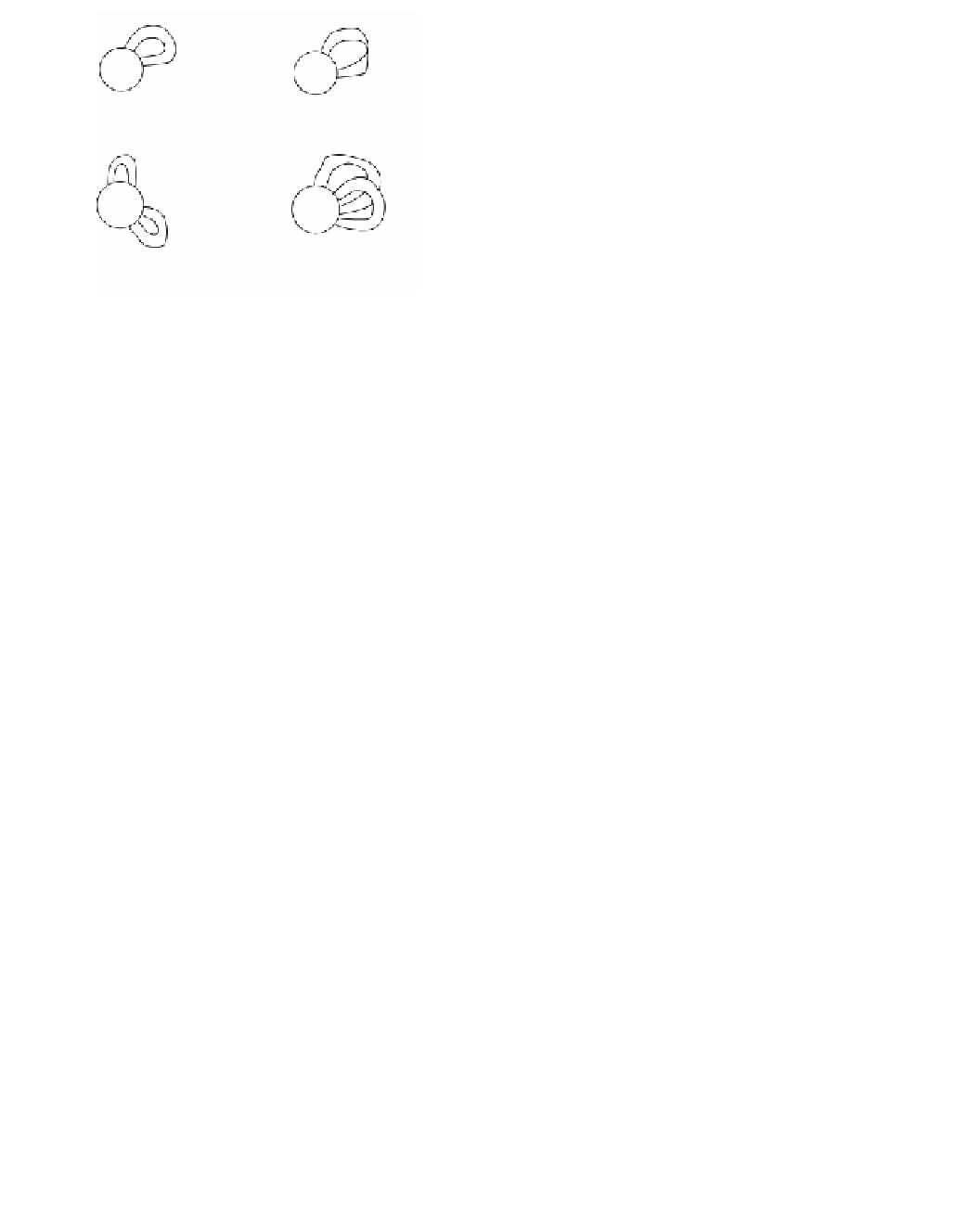Graphics Reference
In-Depth Information
Figure 6.27.
Bordered surfaces as a disk
D
with
handles.
D
D
(a)
(b)
D
D
(c)
(d)
6.6.1. Theorem.
(The Classification Theorem for Bordered Surfaces) Two bordered
surfaces are homeomorphic if and only if they have the same number of boundary
components, they are both orientable or nonorientable, and they have the same Euler
characteristic.
Proof.
See [AgoM76].
Theorem 6.6.1 tells us when two bordered surfaces are homeomorphic, but what
does the typical one look like? To answer that question, we need an easy to under-
stand list of bordered surfaces to which an arbitrary one can be compared. A simple
construction produces such a list. Start with a disk and some rectangular strips. Suc-
cessively paste the two ends of these strips to the boundary of the disk. The bordered
surface that one gets in this way is called a “disk with handles.” See Figure 6.27. Note
that each strip can be attached in different ways. Before we paste the ends to the disk,
we have the option of either giving or not giving the strip a half-twist (see Figure
6.27(a) and (b)). The ends themselves can be pasted in a manner so that the strip
either does or does not interlock with previous strips (compare Figures 6.27(c) and
(d)). By computing the number of boundary components, the orientability, and the
Euler characteristic of such disks with handles, one can show, using Theorem 6.6.1,
that every bordered surface is homeomorphic to one of these (see [Mass67]). One
corollary of this that all bordered surfaces can be imbedded in
R
3
. This was not true
for closed surfaces.
Finally, the classification of
non
compact surfaces with or without boundary turns
out to be much more difficult than that of compact surfaces because the number of
possibilities is so much greater. Some examples of noncompact surfaces are:
(1) Any open subset of a compact surface (alternatively, the complement of an
arbitrary closed set).
(2) The surface of a ladder with an infinite number of rungs.
(3) The surface of an infinite wire grid that is infinite in both directions.
(4) Infinite connected sums of surfaces.
We refer the interested reader to [Mass67]. The classification results are much messier
than those in the compact case. Note that all the triangulations are infinite in this case.

